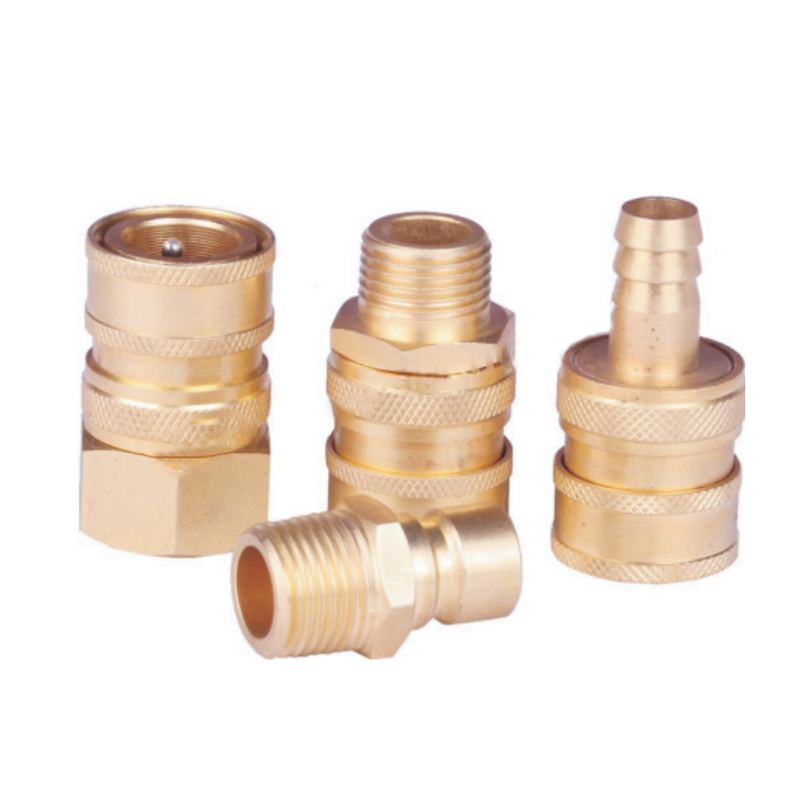What are the best practices for ensuring the longevity and durability of Quick Release Couplings under harsh operating conditions?
Ensuring the longevity and durability of Quick Release Couplings under harsh operating conditions is crucial for the reliability and efficiency of industrial processes. Here are some best practices to consider:
1.Proper Material Selection:
Consider Corrosion Resistance: Choose materials such as stainless steel or corrosion-resistant alloys, especially when the couplings are exposed to corrosive chemicals or environments.
Evaluate Wear Resistance: Assess the wear resistance properties of the materials, ensuring they can withstand abrasion caused by frequent connecting and disconnecting operations.
Chemical Compatibility: Verify that the materials are compatible with the fluids or gases being transferred to prevent chemical reactions that could compromise the integrity of the couplings.
2.Regular Inspection and Maintenance:
Establish Inspection Protocols: Develop a systematic inspection checklist to assess wear, deformation, or corrosion regularly.
Document Findings: Maintain detailed records of inspections, noting any signs of wear or damage. Documenting findings aids in predictive maintenance and trend analysis.
3.Correct Installation:
Follow Manufacturer Guidelines: Adhere strictly to the installation instructions provided by the manufacturer. Improper installation can lead to leaks and premature wear.
Utilize Proper Tools: Use appropriate tools and equipment designed for installing couplings to prevent unnecessary stress on the components during installation.
4.Appropriate Sealing:
Select High-Quality Seals: Choose seals made from durable materials that maintain their integrity under varying temperatures and pressures.
Inspect and Replace Seals: Regularly inspect seals for signs of wear, distortion, or degradation. Replace seals at recommended intervals or when signs of wear are evident.
5.Avoiding Over-Pressure:
Install Pressure Relief Devices: In systems prone to pressure fluctuations, install pressure relief valves to prevent over-pressurization of the couplings, which can lead to failure.
6.Temperature Consideration:
Choose Temperature-Resistant Materials: Select materials that can operate within the expected temperature range. Extreme temperatures can affect material properties and lead to brittleness or deformation.
7.Protect from Contaminants:
Implement Filtration Systems: Install appropriate filters before the couplings to prevent contaminants from entering the system, thereby reducing wear on internal components.
Regularly Clean Couplings: Periodically clean couplings to remove accumulated dirt and debris that could compromise their functionality.
8.Proper Lubrication:
Use Compatible Lubricants: If lubrication is necessary for moving parts, ensure the lubricants are compatible with the materials used in the couplings and the fluids being transferred.
Apply Lubrication Correctly: Apply lubricants sparingly and evenly to prevent excess buildup, which could attract contaminants.
9.Training and Handling:
Provide Training: Train personnel in proper handling procedures, emphasizing the importance of gentle handling during connection and disconnection to prevent mechanical stress.
10.Avoiding Mechanical Stress:
Use Correct Tools: Utilize appropriate tools and equipment for handling and operating the couplings. Avoid using excessive force, which can lead to deformation or misalignment.
Implement Shock Absorption: In applications where mechanical shocks are prevalent, consider shock-absorbing mounts or cushions to reduce the impact on the couplings.
11.Consider Environmental Factors:
Implement Protective Measures: If the couplings are exposed to harsh weather conditions, install protective covers or enclosures to shield them from rain, snow, UV radiation, and other environmental factors that can cause deterioration.
12.Regular Testing:
Schedule Periodic Testing: Conduct regular pressure and leak tests to ensure the couplings meet specified performance criteria.
Monitor Performance: Monitor the results of tests over time to identify any deviations from expected performance, allowing for timely corrective actions.
GT-MC Brass Non-valve quick coupling mould refers to a type of mold used for producing non-valve quick coupling made from brass material.
Material: The mold is made from high-quality steel to ensure durability and longevity.
Precision: The mold is designed with high precision to produce high-quality and accurate non-valve quick couplings.













Contact Us